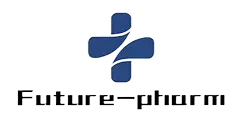
2025 Global Market Insights: 7 Essential Tips for Sourcing Pharmaceutical Products Effectively
In the latest industrial report, at present, the expansion of the global pharmaceutical market is expected to touch $1.57 trillion by 2025. Integrated sourcing has now attained a new level of urgency. With competition rising and consumer expectations increasing, it becomes all the more important for companies to identify reliable suppliers and streamline supply chains in terms of both quality and compliance. These forces that are shaping this ever-evolving landscape could mean that a thorough understanding of market trends and strong sourcing strategies implemented by the company yield large savings and greater efficiencies.
As per a survey recently conducted by the Pharmaceutical Research and Manufacturers of America (PhRMA), around 70% said that their companies had encountered difficulties in sourcing raw materials and finished products because of regulatory and geopolitical complexities throughout the sourcing process in 2023. This validates the need for a proactive sourcing strategy that does not only respond to present market forces but continues to be relevant in the face of emerging future disruptions. By applying the best practices and strategies in sourcing pharmaceutical products, organizations could set themselves up for resilience and agility for any market changes that may arise in the future.

Understanding the Global Pharmaceutical Market Trends in 2025
Thirty years from now, the pharmaceutical market will undergo major changes, and this change will be driven by the certain noteworthy trends affecting both development and sourcing strategies. Recent developments in the pharmaceutical business imply a steady recovery through a multifactored landscape laden with opportunities. It will therefore be very crucial for international sourcing dynamics to understand such trends, especially as Chinese generic pharmaceutical companies innovate and raise their footprints internationally. Innovative drug development is at the forefront, with China establishing its role on the global arena. The country is ranked second-most in the number of innovative drugs under investigation, an acknowledgment of its enviable capability for research and development, especially in newer areas such as cell therapies and antibody-drug conjugates. The increasing number of international collaborations and licensing agreements indicates a change whereby Chinese companies are increasingly setting global standards and practices in pharmaceutical innovation. Indeed, numerous supportive policies exist within China to sustain growth in the biotech sector. On the other hand, some market trends indicate a greater appeal for global pharmaceutical services and integrative approaches to drug sourcing. In considering the complexities involved in international marketing, it would be imperative for companies to leverage the insights and utilize the abundant resources. By concentrating on these emerging trends and adapting sourcing strategies in response, the collective stakeholders would have positioned themselves favorably for the predicted growth in the global pharmaceutical market by 2025.

Key Factors to Consider When Sourcing Pharmaceutical Products
Changes are incoming real quick for the entire pharmaceutical market across the globe, especially with the release of the Antitrust Guidelines on the pharmaceutical sector issued for public use by China's National Market Supervision Administration. This is the very first outstanding directive as an emphasis on the significance of fair competition and as a guideline towards sourcing effective pharmaceutical products. Therefore, it means that companies still remain navigated in these regulations and are not expected to source their but optimally supply chains. It implies that sourcing would be dependent even more on understanding competitive dynamics-indicating price and availability-as stressed by these guidelines.
First of all, whatever criterion I would like to look at in further studies of sourcing pharmaceutical products is that on the pricing strategy, which has undergone radical alterations and reformed approaches following the establishment of centralized procurement programs. Hospitals and clinics in China are now said to buy essential medicines at up to a 96% discount at some points. That is a severe burn rate in dollars, and the pharmaceutical organizations had better balance in formulating their strategies for sourcing with the reduced cost in hand, all while assuring quality. Market data also indicate that the number of medicines being inducted into the health insurance catalog has been continuously increasing since the establishment of the National Healthcare Security Administration in 2018, and further growth is anticipated in the 2024 negotiation phase.
Further, since essential medicines are in high demand, especially for the management of chronic diseases, the sourcing practices should also emphasize reliability and availability. Everybody thinks that this is a period of transformation for the industry, and companies now must innovate their procurement practices to enable a steady supply of products; after all, they are pressurized by both regulatory changes and market expectations. As some of the industry's analyses have indicated, effective sourcing and sustainability will primarily depend on understanding these transformation trends, subsequently requiring adjustment to the strategies employed toward compliance and competitive demands.

Building Strong Relationships with Suppliers for Better Sourcing
Now building good long-term supplier relationships is gradually most crucial in the changing pharmaceutical sourcing paradigm. The new wave of initiatives intended to boost enterprise procurement efficiency underscores the participation and open communication that businesses have to have with their suppliers as the globalization of the market tends towards digitization. They can all truly be tendered in the same basket by gaining such trust and reliability, especially since it would then allow the procurement streamlining toward meeting the pharmaceutical needs by time.
A governance framework with a national procurement inquiry system would be in place so that organizations can view such transactional activities very promptly from their source. Most of these trends are also in harmony to understand the strategic thrust toward resilience relative to disruptions outside. That is why the adoption of strong supplier relationships will allow the organization to penetrate increasingly shared insights and data that will help them make better choices on the adaptive side.
Besides, organizations have to realize the importance of developing relationships with their suppliers in the digital procurement space. Such collaborative relationships will not only gain entry into superior products but also create an environment where the two thrive. Building supplier engagement strategies will not only help organizations fathom the complexities associated with the pharmaceutical landscape but will also realize sourcing effectiveness as well as better value in the end.

Utilizing Technology and Data Analytics for Effective Procurement
At the present time, procurement of technology and data analytics into operations is essential in the efficiency race among emerging pharmaceutical companies. With this new function-the input of artificial intelligence into supply chain processes-then firms will improve on their sourcing strategies to meet increasing demands that market places place on them. Smart shelves and automated picking systems not only facilitate operation but also provide important real-time consumption metrics regarding inventory and product availability, truly revolutionizing procurement processes.
Digitalization of logistics operations would allow pharmaceutical firms to have better control over their supply chains. In advanced data analytics, the firm would forecast demand curves much more accurately and, based on the data, optimize its inventory management practices. This will, therefore, lead to lesser wastage, fewer stockouts, and eventually lower costs. With the number of such companies progressively increasing, intelligent logistics is gradually changing gears for most organizations where it would set different standards within the industry as far as sourcing pharmaceutical products is concerned.
As we advance toward the year 2025, proactive and data-driven procurement strategies will also strengthen their imperatives. Companies that will leverage their logistics and supply chains through technology will survive in a cutthroat and competitive market. Such smart logistics solutions could help companies in the pharmaceutical industry be well-equipped internally to respond to the demands and changes in the industrial environment by setting the pace for maintaining growth despite the changing dynamics.
Ensuring Compliance and Quality Standards in Pharmaceutical Sourcing
The 2037 pharmaceutical sourcing mechanics necessitate a compliance program that must be robust and safeguard product longevity. 등While considering such a compliance culture, which itself is a potential reputation-builder/effective-decision enabler concerning postponed downgrades, in 2025, a real requirement for operational efficiency emerges.
Regulatory frameworks and rules play cardinal roles in pharmaceutical sourcing across different regions of the world. Sometimes these regulations may differ considerably from the next. Pharmaceutical companies need to be aware at all times of the standards and guidelines laid down by relevant bodies viz.: the FDA, EMA, and ICH concerning pharmaceutical sourcing, should they put it in the global context.
Whereas another critical thing is the quality of the pharmaceutical items procured. Therefore, if they are to commit their future to QQA, as part of this, all pharmaceutical entities must regularly crosscheck their suppliers and, definitely, must highlight an intense spotlight at the extent of GMP and ISO certifications. The auditing and assessment mechanisms meticulously conducted by professionals must show potential risks in the supply chain to allow all parties' proactive ways on how these risks can be managed proactively. Besides this, nurturing such trust-worthy relationships with suppliers also provides for better communication and timeliness in reacting to any quality issues.
Another way an entity can cope would be to harness technology leading transparency and checks with procurement processes, not just for meeting compliance but for also regulating quality benchmarks only so that products reach the market.
Therefore, if one is to succeed in 2025, they must address markets from heavy compliance and quality standpoints in all forms of their sourced services. Furthermore, they will have to actively try to subdue these elements as supportive of its procurement strategy for more substantial longevity and success.
